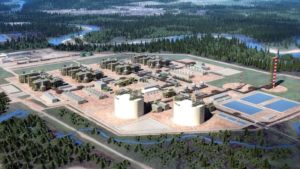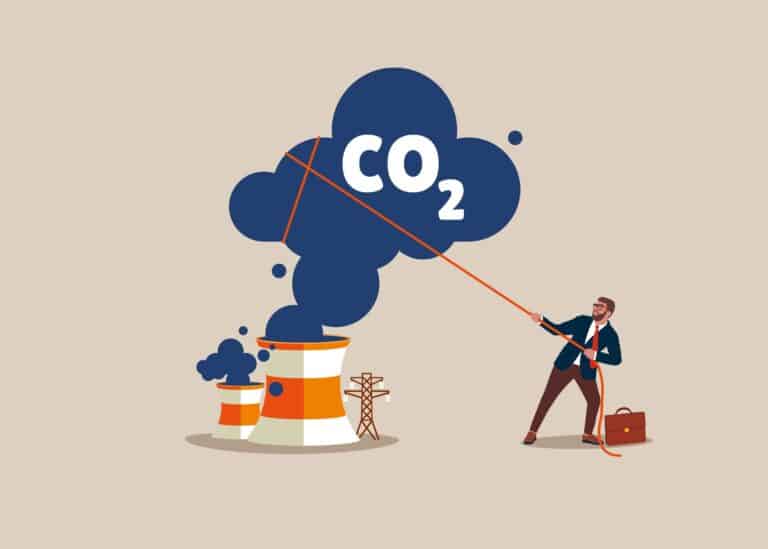At last month’s G7 meeting, the leaders of seven of the world’s most advanced economies agreed to a greenhouse gas emissions target of “net zero” by 2050. That would require largely phasing out the use of fossil fuels. But how? The common reply is “putting a price on carbon,” i.e., imposing carbon taxes everywhere. But unless there’s a viable and cost-effective alternative, taxing something people can’t do without only makes them poorer.
Policy makers seem to believe that “green power” – mainly meaning wind and solar – is the answer. But the World Energy Data website shows that, after several decades of hype and many hundreds of billions of dollars spent, wind and solar contribute only 3.3 percent of world energy supply. This may come as a surprise, since the richly subsidized wind and solar industries claim a much higher figure for their energy-generating “capacity.” This is defined as the electricity that would be generated if the system in question operated continuously at full-speed without any downtime. For solar and wind, this would mean the sun shining all the time and the wind blowing everywhere. In other words, it’s a purely theoretical claim, because it’s hard to imagine those conditions existing at any time, let alone during cold, calm and dark winter nights – when the power is most needed.

Ontario power consumers learned this first-hand after policies implemented under the previous Liberal government that subsidized the installation of thousands of costly windmills and solar panel arrays sent the province’s electricity price from one of the lowest in North America to one of the highest. In addition to imposing needless costs on millions of ratepayers, this approach drove many of the province’s manufacturers south to the welcoming arms of business-friendly, lower-tax U.S. states like Georgia and the Carolinas. Ontario’s then-Liberal government had no excuses, because a similar mix of policies had been tried in Spain and Germany and had failed just as spectacularly.
It’s clear that 'net zero' is scientifically impossible for the world as a whole, and could only be achieved in selected countries at a staggering cost that would impoverish everyone except the wealthiest and most privileged elites. Still, a substantial emissions reduction is achievable.
Given these realities, it’s incredible to think that G7 leaders would agree to base the energy security of their citizens on a plan that defies the irrefutable laws of physics.
What about other alternatives to replace the 84 percent of energy supplied by fossil fuels? World Energy Data lists the following: hydroelectricity contributes 6.4 percent to world energy supply, nuclear 4.3 percent, geothermal and biofuels 1.7 percent. Hydro is a zero-emissions energy source with a long track record, but dams have already been built on many of the world’s most suitable rivers and any new dam-building proposal generates massive opposition. (There’s even a campaign in the U.S. to remove existing dams – and several have already been torn down.) Nuclear is also a zero-emissions energy source, and it has huge growth potential, but new plants are very capital-intensive and often face strong public opposition. Lastly, geothermal and biofuels are marginal producers that would require years of exponential growth to become meaningful contributors. So it’s hard to see how any of those sources could have a material impact in the foreseeable future.

Besides the laws of physics, G7 leaders face another stark reality. The U.S., UK and the 27 EU member countries combined produce just 27 percent of global emissions. Most of the other 73 percent comes from Asian countries. Emissions from China alone equal the G7’s 27 percent. And despite President Xi’s virtuous green rhetoric, his country built three times more emissions-intensive coal-fired electrical capacity in 2020 than the rest of the world combined. China’s energy consumption – and emissions – are going up, as are India’s and those of many other developing countries. Meanwhile, based on a green energy fantasy, Prime Minister Justin Trudeau and his G7 counterparts plan to further hobble their own economies, which are already uncompetitive with China.

Should we give up hope of reducing greenhouse gas emissions? It’s clear that “net zero” is scientifically impossible for the world as a whole, and could only be achieved in selected countries at a staggering cost that would impoverish everyone except the wealthiest and most privileged elites. Still, a substantial reduction is achievable. And the biggest opportunity for cost-effective, practical emissions reduction lies in a fossil fuel in practically unlimited supply.
That fossil fuel is natural gas.
Burning coal to generate electricity currently causes 40 percent of global emissions from fossil fuel sources. Converting a coal-fired plant to natural gas reduces its emissions by almost 50 percent. Canada’s utilities have already shut down the large majority of their coal-fired units, and the remaining plants’ days are numbered. (Just on Monday, Transalta Corp. announced that it had completed the coal-to-gas conversion of the second of its three remaining coal-fired generating stations in Alberta.) But there is vast opportunity to do much more of this globally. We can, as the saying goes, “do good by doing well” by exporting our bountiful natural gas supplies in the form of liquefied natural gas (LNG) to replace coal.

The $40 billion LNG Canada project now under construction in Kitimat, B.C. will reduce Chinese CO2emissions by 60-90 million tonnes per year, the equivalent of shutting down 20-40 coal-fuelled power plants. That’s also the equivalent of taking some 80 percent of the cars off Canadian roads. Canada has sufficient gas supplies for many more LNG projects. A decade ago, there were 20 projects proposed. But Canada’s Byzantine regulatory approval process, which has earned our country a “can’t get anything done” reputation, saw project sponsors giving up after spending billions in preparation and regulatory costs.
There’s also opportunity for natural gas to replace some use of crude oil. Oil used for ground transportation and shipping contributes approximately one-third of global emissions. Converting vehicles and ships to natural gas cuts greenhouse gas emissions by up to 25 percent. And that’s already happening. Worldwide there are more than 20 million natural gas-fuelled (NGV) passenger vehicles, heavy trucks and buses. Paradoxically, few of those are in the very G7 countries that vow to achieve “net zero.” Asia, led by China, India and Pakistan, accounts for the majority of NGVs, no doubt motivated mainly by reducing dangerous urban smog rather than concern about greenhouse gas emissions. Iran has the world’s second-largest NGV fleet, which seems surprising until one considers that switching vehicles to less expensive natural gas allows Iran to export more highly profitable crude oil.

The marine shipping industry is well advanced in replacing high-polluting bunker fuel with LNG. Here in Canada, BC Ferries has taken delivery of several new LNG-powered vessels and has also converted older vessels to natural gas. There is broad scope to do much more.
Rather than ravaging the living standards of Canadians with carbon taxes and wasting public funds subsidizing green power, here are two things Canada can and should do to reduce both national and global emissions.
First, commission an LNG export task force made up of government, industry and directly affected populations (including First Nations) to streamline the LNG export project approval process. This will make investment in LNG more attractive and help lure back international energy companies and investors. Second, ditch Trudeau’s scheme to require all vehicles sold in Canada to be electric by 2035 and instead support the immediate creation of a nationwide NGV filling station network, setting NGV fuel taxes at zero. This will enable the use of NGVs to flourish in Canada.
It’s time for a Canadian emissions reduction strategy based on facts and economic opportunity rather than ideology and fantasy.
Gwyn Morgan is the retired founding CEO of EnCana Corp., formerly Canada’s largest producer of natural gas.





